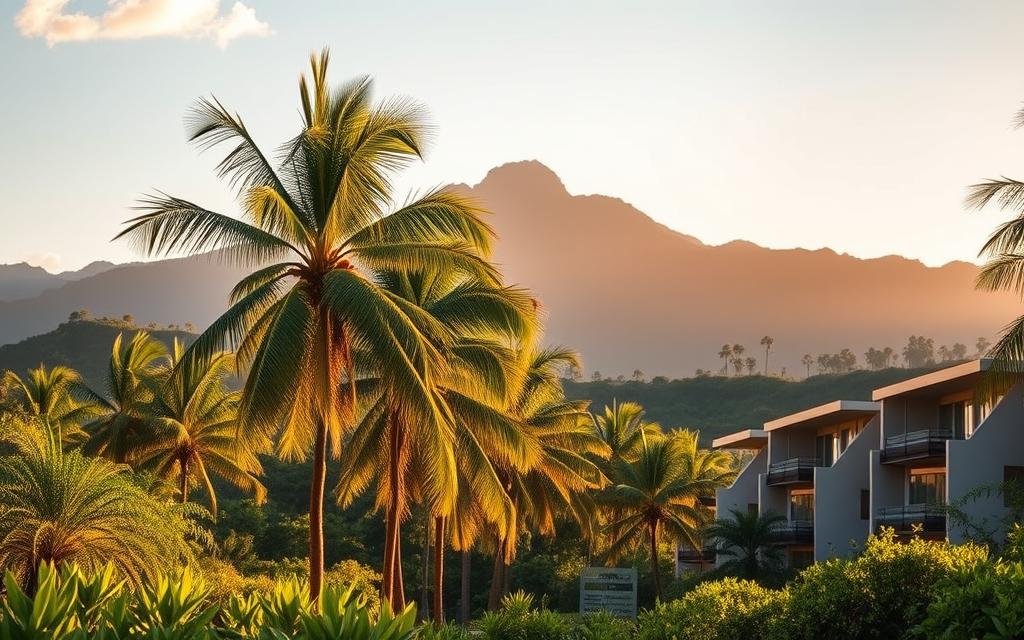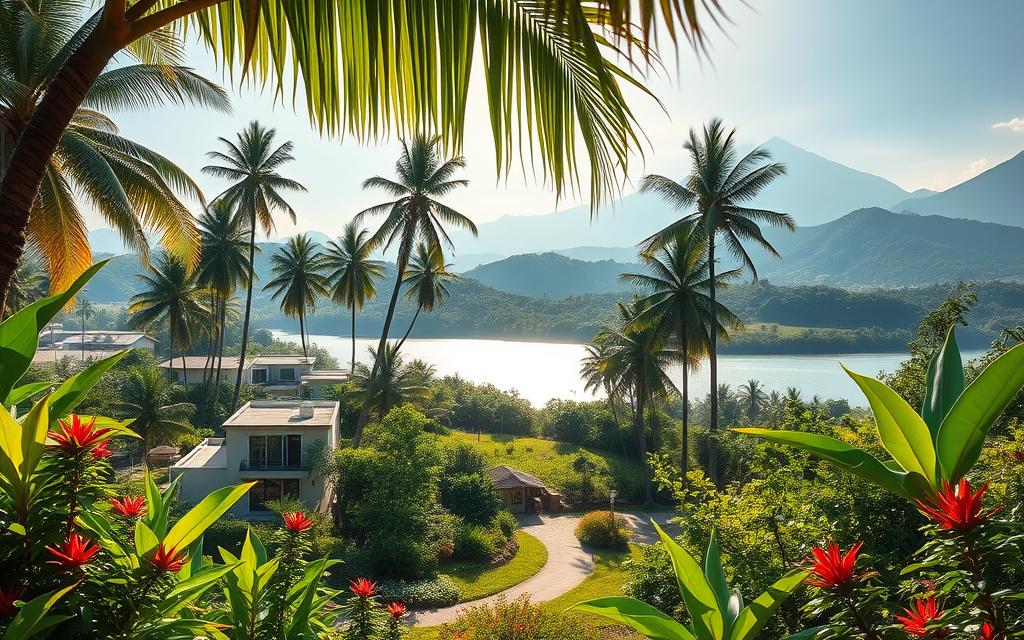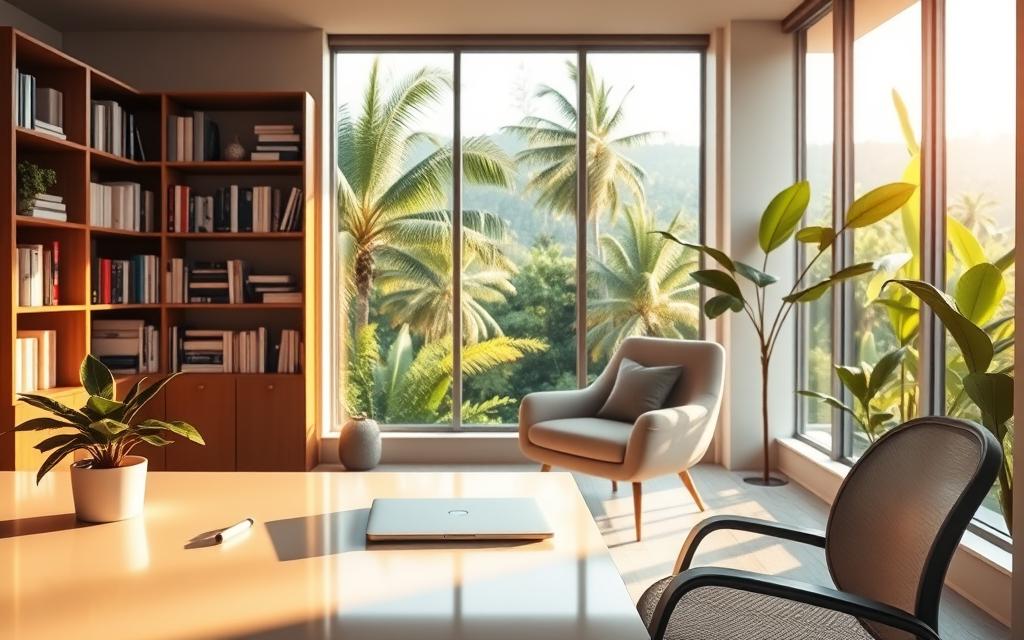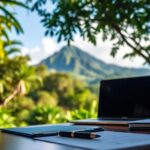Is Costa Rica Investor Residency Worth It? | Expert Insights

Did you know that Costa Rica ranks among the happiest countries in the world? With its stunning natural beauty, mild climate, and welcoming culture, it’s no wonder many are drawn to this Central American gem. For those seeking a vibrant lifestyle, residency options here offer a unique opportunity to call this paradise home.
Exploring legal pathways, such as the investor visa, can provide long-term or permanent status. This option not only grants access to high-quality healthcare but also ensures stability in a politically secure environment. Families and individuals alike find the lifestyle here both enriching and fulfilling.
In this guide, we’ll delve into the details of the investment thresholds, legal requirements, and application process. Whether you’re looking for a new adventure or a peaceful retreat, Costa Rica’s residency programs might just be the answer you’ve been searching for.
Introduction to Costa Rican Residency Options

Costa Rica offers a variety of residency pathways tailored to different lifestyles. Whether you’re a retiree, investor, or someone with a steady income, there’s a program designed to meet your needs. The country’s welcoming environment and stunning landscapes make it a top choice for those seeking a new home.
Overview of Residency Pathways: Rentista, Inversionista, and Pensionado
The Rentista program is ideal for individuals with a stable income. It requires proof of a monthly income of $2,500 for at least two years. This option is perfect for those who want to live in Costa Rica without making a significant investment upfront.
The Inversionista pathway is tailored for investors. It requires a minimum investment of $150,000 in real estate or other approved assets. This program is a great choice for those looking to combine residency with a profitable venture.
The Pensionado program is designed for retirees. It requires a monthly pension of at least $1,000. This option offers a relaxed lifestyle, with access to the country’s excellent healthcare and natural beauty.
Why Costa Rica Remains an Attractive Destination
Costa Rica’s appeal lies in its vibrant culture, scenic landscapes, and high-quality healthcare. The country is known for its political stability and welcoming community. These factors make it an ideal destination for both permanent and temporary residency.
For those considering real estate investments, the Inversionista program provides a clear pathway to residency. With a minimum investment of $150,000, you can secure your place in this tropical paradise. Learn more about the benefits of residency in Costa Rica and how it can enhance your lifestyle.
Is Costa Rica Investor Residency Worth It?
Investing in residency can transform your future in a tropical paradise. This pathway offers long-term stability and access to a vibrant lifestyle. For those seeking both financial gains and a fulfilling life, this option stands out as a compelling choice.
Key Benefits of Investing in Costa Rican Residency
One of the primary benefits is the opportunity to secure long-term residency rights. This status enhances global mobility and provides a stable base in a welcoming community. Additionally, residents gain access to high-quality healthcare and a peaceful environment.
Another advantage is the potential for financial returns. Real estate investments, for example, can generate rental income and appreciate over time. This dual benefit makes the program attractive for those looking to combine lifestyle and financial goals.
Evaluating Financial Thresholds and Returns
The minimum investment requirement is $150,000 in real estate or other approved assets. This threshold is accessible for many, making the program a viable option for diverse individuals. The application process is straightforward, ensuring a smooth transition to residency.
Investors can expect returns through property appreciation and rental income. These financial gains, combined with the lifestyle benefits, make the program a worthwhile consideration. For those seeking a blend of stability and opportunity, this pathway is ideal.
Navigating Various Residency Types in Costa Rica
Understanding the differences between permanent and temporary residency is key to making an informed decision. Each option comes with unique benefits and requirements, tailored to different lifestyles and goals. Whether you’re planning a short-term stay or a long-term commitment, knowing the details can help you choose the right path.
Understanding Permanent vs. Temporary Residency
Permanent residency offers long-term stability and the ability to live in the country indefinitely. It requires a more extensive application process, including proof of financial stability and proper documentation. This option is ideal for those looking to make a lasting home in a tropical paradise.
Temporary residency, on the other hand, is designed for shorter stays. It often involves less stringent requirements and is a great choice for those testing the waters before committing fully. Both options provide access to the country’s healthcare and lifestyle benefits, but the choice depends on your long-term plans.
How to Choose the Right Path for Your Situation
Selecting the right residency type involves evaluating your financial situation, lifestyle preferences, and long-term goals. For example, if you’re planning to retire, permanent residency might be the best option. If you’re exploring the country for a few years, temporary residency could be more suitable.
Proper document preparation is crucial for both options. Ensuring you have all the necessary paperwork can streamline the application process and avoid delays. Additionally, understanding the legal benefits of each option can help you make a decision that enhances your quality of life.
For more details on how long you can stay outside the country with residency, check out this helpful guide.
Understanding the Inversionista (Investor) Residency Program

The Inversionista program opens doors to a vibrant lifestyle through strategic investments. This pathway is designed for individuals looking to combine financial growth with long-term stability. By meeting specific requirements, applicants can secure their place in a welcoming community.
Real Estate Investment Requirements
To qualify, a minimum investment of $150,000 in real estate or other approved assets is required. This threshold makes the program accessible to a wide range of individuals. Property investments must be backed by accurate deeds and ownership documentation to ensure eligibility.
Investors can choose from various options, including residential or commercial estate. Each investment must meet the program’s criteria to be considered valid. Proper documentation, such as purchase contracts and property value assessments, is essential for a smooth application process.
Eligibility Criteria and Application Process
Applicants must provide proof of their investment, including official certificates and bank statements. The process involves submitting these documents to immigration authorities for review. Accurate and complete paperwork is crucial to avoid delays.
The application also requires a clean police record, birth certificate, and marriage certificate if applicable. Once submitted, the process typically takes up to two months. Careful adherence to these requirements ensures a streamlined experience for investors.
By following these steps, applicants can secure their residency and enjoy the benefits of a tropical lifestyle. The Inversionista program offers a unique opportunity to combine financial growth with long-term stability.
Exploring Rentista and Pensionado Alternatives
For those seeking residency without significant upfront investments, the Rentista and Pensionado programs offer flexible alternatives. These pathways cater to individuals with stable income or retirement funds, ensuring families, including dependents, are considered. Let’s explore the details of each option to help you make an informed decision.
Rentista: Income Stability and Document Requirements
The Rentista program is ideal for individuals with a steady income. Applicants must demonstrate a monthly income of at least $2,500 for a minimum of two years. This option is perfect for those who want to live in the country without making a large capital investment upfront.
Proof of consistent funds is essential for this program. Applicants must provide bank statements or other financial records to validate their income. Additionally, dependents, such as children under 25, can be included in the application, making it a family-friendly choice.
Pensionado: Retirement Benefits and Minimal Income Needs
The Pensionado program is tailored for retirees with a steady pension. To qualify, applicants must show a monthly pension of at least $1,000. This option offers a relaxed lifestyle, with access to the country’s excellent healthcare and natural beauty.
Retirees can also include dependents in their application, ensuring their family can join them. The program requires proper documentation, such as pension statements and proof of income, to validate eligibility. This pathway is a great choice for those looking to enjoy their golden years in a welcoming community.
For more details on the legal requirements for residency, check out our comprehensive guide.
Financial Considerations and Investment Returns
Understanding the financial aspects of residency is crucial for making informed decisions. Proper planning ensures a smooth application process and maximizes long-term benefits. Let’s explore the key factors to consider when budgeting for your investment.
Cost Analysis and Budgeting for Investment
Upfront costs include the minimum investment of $150,000 in real estate or other approved assets. Ongoing fees, such as property taxes and transfer taxes, should also be factored into your budget. These taxes typically amount to 1.5% of the purchase price and 0.25% annually.
It’s important to plan for the estimated timeline of 9 to 12 months for the residency process. This ensures you have sufficient funds to cover living expenses during this time. A well-prepared financial plan can help avoid unexpected costs and delays.
Tax Benefits and Potential Rental Income
Investors can enjoy significant tax benefits, including exemptions for businesses operating in Free Trade Zones. These exemptions can last up to 8 years, followed by a 50% reduction for the next 4 years. This makes the program attractive for those looking to grow their business.
Additionally, real estate investments can generate rental income, with potential returns ranging from 5% to 13%. This dual benefit of tax savings and rental income enhances the overall appeal of the program. For more details on the minimum property value for investor residency, check out our guide.
By evaluating monthly financial commitments against long-term benefits, you can make a decision that aligns with your goals. A strategic approach ensures both residency success and investment returns.
Navigating Legal and Document Requirements
Securing residency in a new country involves meticulous preparation and attention to legal details. Proper documentation is the foundation of a successful application. Missing even a single step can lead to delays or rejections.
Essential Documentation from Home and Costa Rica
Applicants must provide certified documents from their home country and local authorities. A clean criminal record is mandatory, verified through police clearance certificates. Birth certificates and marriage documents must be notarized and apostilled for authenticity.
In addition, proof of financial stability and health insurance are required. These documents ensure applicants meet the eligibility criteria. Proper preparation minimizes delays and enhances the overall experience.
Legal Advice and Professional Guidance
Consulting with legal experts is highly recommended. Professionals can guide applicants through the complex process, ensuring all requirements are met. They also help access the necessary documents and avoid common pitfalls.
Legal support is invaluable for navigating local regulations. Experts can clarify ambiguities and provide tailored advice. This step ensures a smooth application process and increases the chances of approval.
Step-by-Step Application Process and Timelines
The journey to securing residency involves a series of well-defined steps and timelines. Proper preparation ensures a smooth experience, minimizing delays and complications. Let’s explore the stages of the process and how to navigate them effectively.
Detailed Walk-Through of the Application Steps
The first step is gathering all necessary documents. These include a clean criminal record, birth certificate, and proof of financial stability. Each document must be notarized and apostilled to meet legal requirements.
Next, submit your application to the immigration authorities. This step involves providing proof of your investment or income, depending on the program you choose. Ensure all paperwork is accurate and complete to avoid delays.
Once submitted, the review process typically takes 6 to 12 months. During this time, maintain a detailed record of all communications and submissions. This helps track progress and address any issues promptly.
Tips for Avoiding Common Pitfalls
One common mistake is incomplete documentation. Double-check all forms and certificates before submission. Missing even a single requirement can lead to delays or rejection.
Another pitfall is underestimating the timeline. Plan for the entire process to take up to a year. This ensures you have sufficient funds and resources to cover living expenses during the waiting period.
Finally, seek professional guidance. Legal experts can help navigate complex requirements and ensure compliance. Their support increases the chances of a successful application.
By following these steps and tips, you can streamline the process and secure your residency efficiently. Careful adherence to requirements ensures a smoother transition to your new life.
Embracing the Costa Rican Lifestyle
Living in a tropical paradise offers more than just scenic views. It’s about experiencing a fulfilling lifestyle that combines modern comforts with natural beauty. Residents here enjoy a unique balance of wellness, adventure, and community.
Quality of Life: Healthcare, Climate, and Culture
The country is renowned for its high-quality healthcare system. Residents have access to both public and private services, ensuring comprehensive care. This is a significant advantage for families and individuals seeking long-term stability.
The climate is another highlight, with mild temperatures year-round. This allows for outdoor activities and a healthier lifestyle. The vibrant culture, enriched by local traditions and festivals, adds to the overall appeal.
Community Benefits and Family Inclusion
Many residency programs are designed to include families. Dependents, such as children and spouses, can join the primary applicant. This family-inclusive approach makes it easier to settle and thrive in a new environment.
Over time, residents can also explore the path to citizenship. This offers additional benefits, such as voting rights and greater global mobility. Embracing the local culture and community enriches the overall experience, making it a rewarding journey.
Conclusion
Choosing a new home in a tropical paradise involves careful planning and understanding the available pathways. Throughout this guide, we’ve explored the various residency options, from temporary to permanent, and the financial benefits they offer. Each program is designed to meet the needs of individuals seeking stability, global mobility, and a better quality of life.
With proper documentation and professional guidance, the application process becomes straightforward. Transitioning from temporary residency to permanent status is achievable within a few years, opening doors to additional benefits like citizenship and passport privileges. This destination continues to attract diverse applicants due to its welcoming community and thriving economy.
For those ready to take the next step, success stories highlight the transformative potential of this journey. Start planning today to secure your place in this vibrant and fulfilling environment.


